Packaging and presentation
The Funk ships in a familiar white, premium Burson Audio box that really does feel altogether far too small to be containing an integrated speaker amplifier. Inside, as well as the Funk itself, the package includes a switching AC power supply, a hex key for opening up the Funk’s chassis to access/swap out the opamps, a 3.5mm audio splitter to allow the user to separately attached a mic/headphones to the front 3.5mm jack, and a pair of RCA cables (according to the Funk product page, there were none with this review unit). If you choose the ‘Deluxe Package’ option, also included are the stock NE5532 opamps (the Burson V6 Vivid opamps are pre-installed), and the additional ‘Cool Case’ stand.
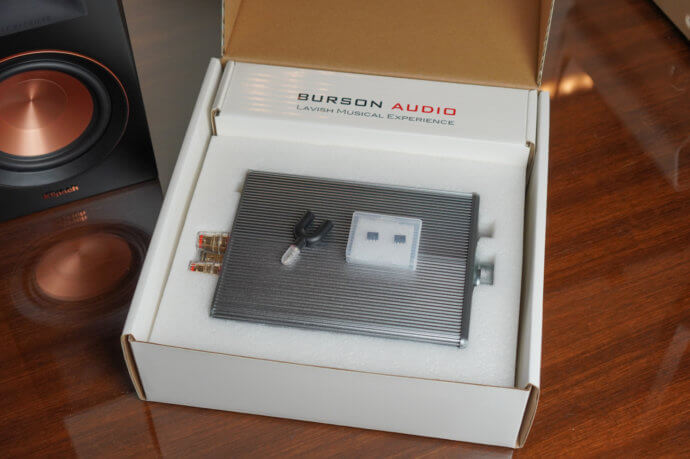
Burson Audio Funk
Form-factor and design
As I’ve already mentioned, the Funk is a genuinely compact little desktop device – for reference, it has about the same overall footprint as a Schiit Audio Asgard or Bifrost, although it is deeper in length than it is wide (which you should take into consideration if you plan on ‘stacking’ it with another device). The all-aluminium construction oozes quality, and while it’s relatively light the Funk feels absolutely rock-solid – it’s a bloody well-built little unit.
I’m a huge fan of the new industrial design that Burson introduced starting with their Conductor 3 range – while their ‘Cool Case’ design is intended to be functional in terms of helping to manage heat dissipation, it also happens to look awesome in the flesh. While many competitor products aim for either a sober, utilitarian look or a more retro-inspired aesthetic, the Funk’s understated, futuristic lines give it a kind of ‘Bauhaus’ charm – you certainly wouldn’t want to hide it away under a stack of paper or hidden away on a shelf – it’s a real ‘statement’ kinda device.
Whereas the Playmate 2 is the ‘brainier’ of the two Burson siblings thanks to its inbuilt ESS DAC, the Funk is strictly an all-analogue affair, meaning you’re going to need either a digital or analogue source upstream from it to feed it with a line-level signal via its sole pair of single-ended RCA inputs – yep, it only has one input.
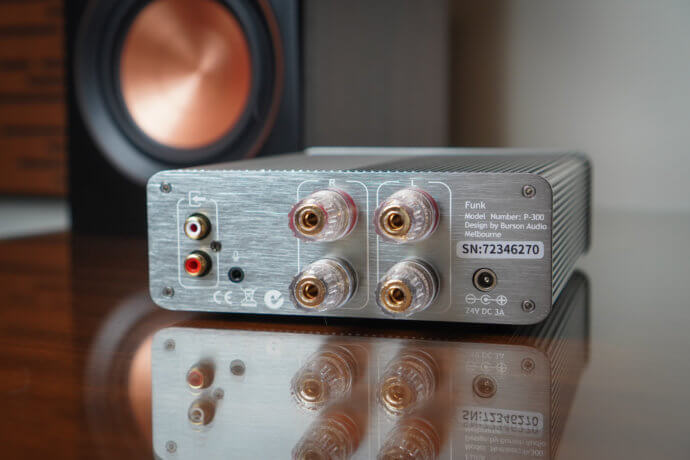
Burson Audio Funk
In terms of analogue outputs, it’s also a pretty simple affair that is in keeping with the minimalist approach of the Funk. On the back, one pair of speakers can be affixed via a decent set of five-way binding posts. On the front, headphones can be connected via either the full-sized, single-ended 6.3mm jack or a smaller 3.5mm jack. Those of you hoping for balanced headphone facilities might be a little disappointed by this, especially considering that many equivalently-priced headphone amplifiers such as the Topping A90 or Schiit Jotunheim 2 (review coming soon!) offer this option. Yes, it’d be a ‘nice to have’ option here in the Funk, but adding a fully-balanced circuit as well as inputs/outputs would no doubt increase the Funk’s size, weight, and cost – and thereby going against its streamlined raison d’être.
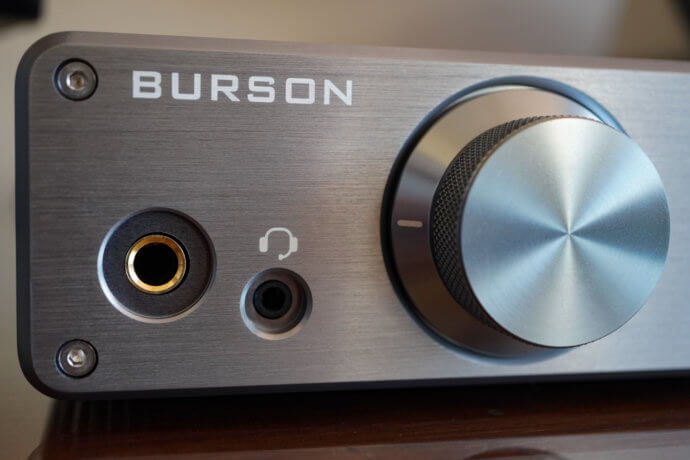
Burson Audio Funk
One interesting feature in the Funk, which is a feature common across most of Burson’s amplifiers is the fact that the 3.5mm output also doubles as a microphone input, allowing you to connect a 4-pole headset connection. On the rear of the Funk, a matching 3.5mm passthrough output allows you to connect the mic signal to a laptop/PC, making the Funk an even more interesting option for PC gamers or those who need to switch between music enjoyment (yay) and conference calls (boo) on the fly.
The other ‘analogue’ element of the Funk that separates it from the Playmate 2 is its volume knob. As well as being considerably bigger than the Playmate’s (it takes up most of the Funk’s front panel!), it’s different in that it’s not a stepped digital volume pot – it’s a traditional analogue potentiometer, for which Burson has chosen the ALPS 820G.
Three small buttons on the front of the Funk manage the remainder of its functions: changing the gain stage for the headphone amplifier between high/low (this doesn’t affect the speaker output); switching between the headphone and speaker outputs (you can’t use both at once); and turning the device on and off. That’s it – the Funk is at once a pretty simple, minimalistic unit, and yet still so much for a small, relatively affordable analogue device.
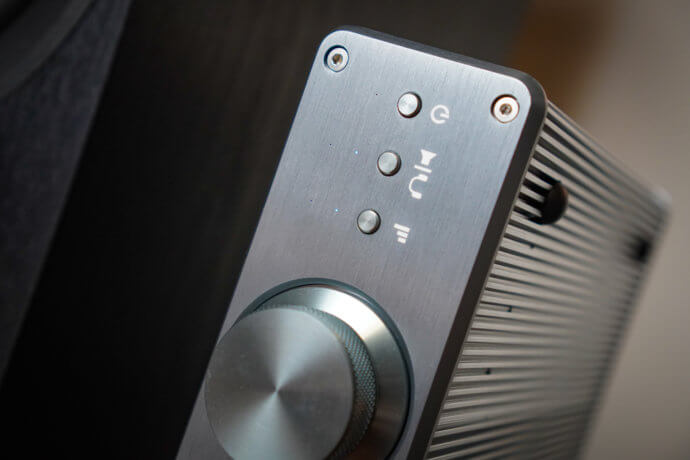
Burson Audio Funk
Funk user experience
Setting up the Funk is a pretty straightforward affair – plug it into the wall via the power supply; add a line-level signal of choice via RCA cables; and then affix speakers or headphones (or both!) and you’re off to the races. Very small blue LED lights (while I hate blue LEDs, these are nice and minimal) show you which gain and output settings are in play above the respective buttons on the front panel – ‘up’ = high gain/headphone mode; ‘low’ = low gain/speaker mode.
Next, it’s time to turn up the volume (or down, perhaps) until you’re hearing music at the right level. The volume knob, for me, is the make or break for an amplifier – especially when it doesn’t have a remote, which is the case for the Funk. You’re going to be interacting with it a lot on your desktop, so it’ll need to be accurate, smooth, and responsive to the touch. Thankfully, the Funk’s chunky, machined aluminium knob is both – it’s absolutely terrific. There’s a slight hint of channel imbalance (as is the case with many potentiometers) at very low levels, but it doesn’t affect things at all at normal listening levels – even with relatively sensitive IEMs. My main concern with the Playmate 2 was the fact that its digital volume control didn’t give enough usable volume range at low levels – ‘01’ was simply too loud for me with some headphones, even in low gain. It also took a lot of twisting of the Playmate 2’s pot to the volume turned up and down. Neither of these problems are evident in the Funk, and this simply makes it a far more enjoyable and usable device in my books.
I tended to use the Funk’s 6.3mm output more so than the 3.5mm one, which is slightly recessed – you might have problems trying to fit more chunky headphone jacks (like on Grados, for instance) into it, so I found that an adapter with the larger jack was easier to use. Given that the Funk is relatively small, you might find that plugging/unplugging headphones might cause it to slide around on your desktop on its four small rubber feet. I don’t use a mic/headset with my Macbook, so I didn’t get the chance to test out the mic pass through – it’s a pretty niche feature anyhow, in my books, and not one that’s super important for my personal circumstances, but this might work super well in your desktop setup.
Despite its outer chassis nearly being one entire heatsink, the Funk doesn’t really get hot at all. Even when playing loudly for hours at a time with demanding speakers the Funk never got more than a little warm to the touch. The ‘Cool Case’ stand, available with the ‘Deluxe Package’ option is designed to help make the Funk run even cooler by exposing the ‘underside’ of the device, but mounting the Funk on its side means that the Funk takes up even less space on your desktop. I used the case mainly because I think that the Funk looks even cooler parked on its side – it really is a clever piece of simple industrial design – hats off.
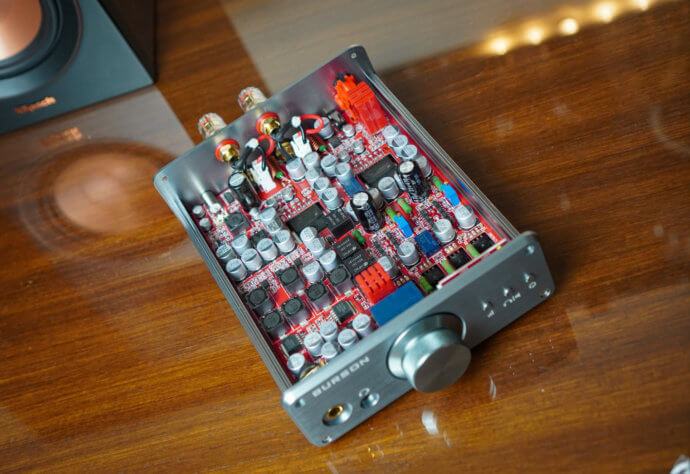
Burson Audio Funk
Opening up the chassis to access the opamps and take a look under the hood is a pretty simple affair – using the supplied hex key you unscrew the top corner screws on both ends of the Funk, and the top half of the chassis simply lifts away. The two V6 Vivid (Dual) opamps installed in my review unit simply lift out, and can be put back in (or replaced by alternate opamps) simply by lining up the two rows of four pins in the right direction and gently pushing back in. I’m a little embarrassed to say that I couldn’t manage to swap in the stock opamps correctly for review purposes because I bent the (somewhat delicate) pins on one of them, and couldn’t manage to seat it in properly. I’m sure I’ll be able to do this again down the track with a little more patience, so I’ll update the review when I do so!
While the Funk is designed to be a nearfield or desktop analogue ‘companion’, there’s certainly no reason why you can’t use it as a hifi amplifier in your ‘main’ system – and I can certainly attest to this, having spent some time using it in my main loungeroom setup. I’ll speak more to the Funk’s performance a little later, but it certainly has enough oomph to fill a decent-sized room, even with more power-hungry speakers like the 85dB sensitivity KEF LS50. The only caveat with doing so, of course, is that you’re going to need to get up every time you want to change the Funk’s volume – and yes, there were times where I did wish that the Funk did have a remote like other devices in the Burson range, including the Playmate 2. The other features I would have loved to see in the Funk would be the addition of one more set of RCA inputs to allow you to switch between sources, and perhaps an RCA pre-out to allow the Funk to work as a preamp with either powered speakers, a power amplifier, or a subwoofer. Seeing as the Funk is modestly powered, being able to add a sub into a two-channel set-up to complement a pair of bookshelf speakers would be amazing, but, beggars can’t be choosers I suppose – a device of this size and price does have its limits, and this makes the Funk’s ‘sweet spot’ firmly on your desktop, although it’s still very much a viable contender for someone looking for a simple, compact device in a hifi set-up with who uses one main music source (and doesn’t mind having to change the volume manually!).
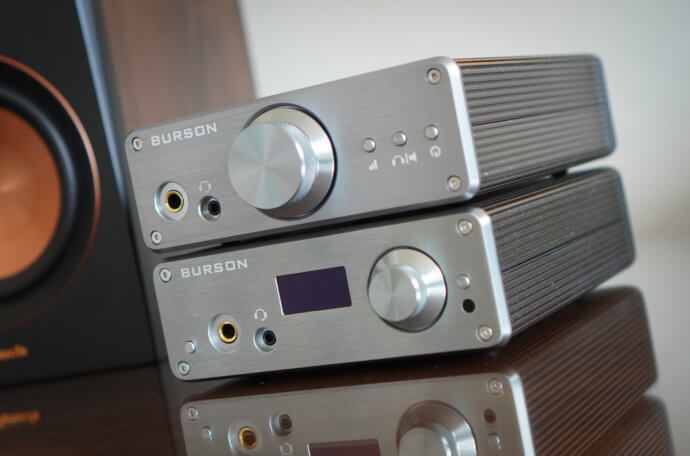
Burson Audio Funk
While I’m sure there’s a few of you who’ll be keen to pair a Funk to a turntable, most prospective Funk owners will be hooking it up to an upstream DAC. Given the name of the game is all about ‘minimalism’, almost any well-designed single-ended output DAC ought to make for a decent pairing here. The more aesthetically-minded of you might be thinking by now that the Playmate 2 with its inbuilt DAC might make for a good ‘stack’ with the Funk. Well, yes, and no – let me explain. The Playmate 2 can certainly be used as a digital source with the Funk, giving you access to two (optical and USB) sources that can be switched between with the click of a button, but the two devices aren’t super complementary, by design. Firstly, the Playmate 2 doesn’t have a dedicated line out mode, meaning that you’ll need to set the volume to ’99’ (= max), which takes a few cranks of the volume wheel to do so. Next, seeing as the headphones stages are identical on the two devices, it doesn’t make a whole ton of sense to buy both. But hey, if you’d like a nice matchy-matchy Burson stack, then go for gold. Technically, you can set the volume of the Funk to ‘max’, and then use the remote/digital volume control of the Playmate 2 to control the Funk’s volume, and if we are getting technical, then you could also splice the pre-output of the Playmate 2 to a subwoofer as well…and I did test this out (for science) and it happened to work perfectly well. Still, it’ll be interesting to see Burson happens to release a standalone DAC in their ‘Party Series’ of products that shares the same form-factor as the Playmate 2 and Funk – if so, then it might well be worth Funk owners taking note.
My only real negative comment about living with the Funk as a device is the fact that it makes a rather loud ‘pop’ when switched off (similar to the Playmate 2) – with both speakers as well as headphones. At first, it sounds like something has gone awry with the device, but after a while, you get (slightly) accustomed to it – I got into the habit of unplugging my headphones before powering the device down. When using speakers, I would have to switch the device to headphone mode, wait a few seconds for the capacitors to discharge, and then turn the device off. It’s not a deal-breaker by any means, but just something to be aware of.
Click over to page 3 to continue the review.





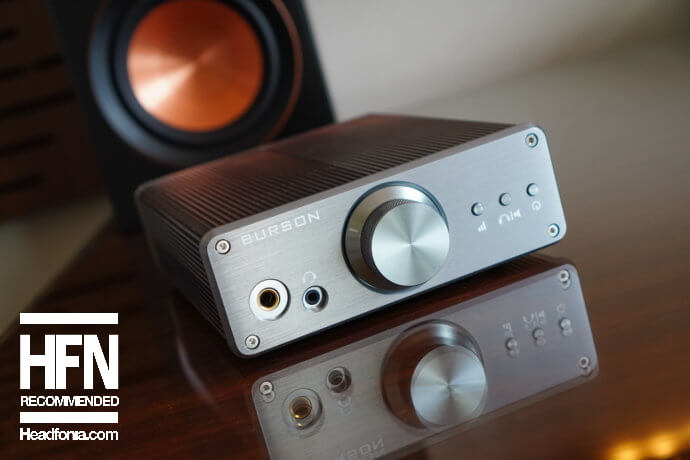
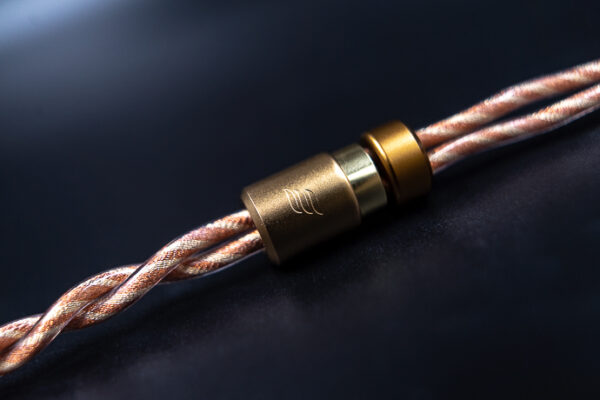
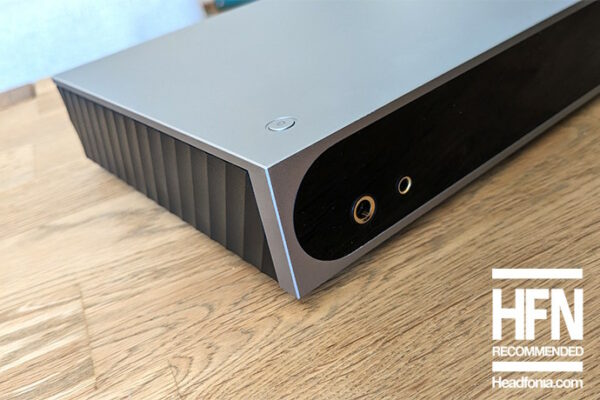
Ivan
Hello Mathy Graham, My name is Ivan,
I need to know how to use the FUNK to My current PC Setup.
I am having a PC as source, and DACmini CX as DAC/AMP combo.
My PC is old, and the onboard output and mic input are terrible.
So I want to add FUNK as my speaker / headset amplifier.
As for the headset, do you think the mic pass through to the PC will bring the mic quality up? (As my motherboard onboard audio is terrible)
Thank you.
Matty Graham
Hi Ivan,
The DACmini should take care of your soundcare problems, if you’re connecting your PC to it via USB/Optical. From there, you would connect the RCA outputs of the DAC to the RCA inputs on the Funk.
I’m not sure about the mic quality however – the Funk is simply a ‘passthrough’. It would be the same as connecting a pair of headphones with an inline mic into the headphone adapter of your PC (if that can recognise a TRRS microphone input).
Best to test with an old pair of smartphone earphones with an inline mic (or your headset) to see if that works?
Ivan
Hi Matty,
So yes i had the DACmini served me well for years, but now i want to accomodate it for my son gamings peripheral too. The FUNK will not improve the mic quality as it just bypass it, so i think i better get the PLAYMATE2 to replace the DACmini.
Thanks for the respond.
Ivan
Hello Matty, i have questions:
“Firstly, the Playmate 2 doesn’t have a dedicated line out mode,
meaning that you’ll need to set the volume to ’99’ (= max), which takes a few cranks of the volume wheel to do so”
Q: When its paired with FUNK, do you mean that the playmate2 volume control also control the lineoutput volume ?
So that there is dual volume control here?
“and if we are getting technical, then you could also splice the pre-output of the Playmate 2 to a subwoofer as well”
Q: But how you are going to pair it with the FUNK, as there is only 1 output?
Thank you
Matty Graham
Yes, you can control the volume with either the Playmate 2 or the Funk. If you’re not using a subwoofer, I’d probably set the Playmate 2 to ’99’ and use the Funk’s pot to control the volume.
You can easily add a subwoofer (or other downstream device) by simply putting RCA splitters into the L/R outputs of the Playmate 2 – I just use these: https://www.jaycar.com.au/rca-plug-to-2-x-rca-socket/p/PA3560?gclid=Cj0KCQjwwY-LBhD6ARIsACvT72PAgTfZOu-s1-hltipgjAbK3yOCTPdKsVb8-rwWK4PGE-2SXJXatPMaAnIYEALw_wcB
BOL
Hi,
Currently trying to decide between the Funk or the Soloist 3x.
I don’t need the extra power as I’ll be using it primarily for IEM’s (Odins), but if the Soloist has better sound quality it would be worth it.
But if they basically sound the same and just have different applications (the Funk can power speakers, the Soloist can power demanding headphones) then the Funk will suit my needs.
Any thoughts?
Matty
Both are overkill for IEMs, you definitely don’t need a soloist. The Funk could be an ok solution if you need to power speakers too, but you’re probably better off with something much lower powered.
BOL
Thanks for the quick reply!
I know it seems like amps for full sized headphones like this is overdoing it, but I (and others) have found the Odins really scale up/are amp picky.
For instance, I’ve listened to the Odins extensively from my iBasso DX160, Gilmore Lite Mk2, and Cayin iHA-6 (and an old Asgard 2). The sound stage is small and congested with the 160 (it’s just ok for portable use), with the Mk2 the sound stage is pushed too forward (not enough depth) but there is more power and control, and with the powerful iHA-6 the sound stage really opens up, control and transients are superb, layering, instrument placement, and depth are much better, and the bass is much more powerful…the problem is there is a hardness/glare/metallicness to the iHA-6 I’ve never liked. (The Asgard I’ve never liked: just kind of a “rough” or “crude” sound to me which definitely drags down better gear like the Odin).
But besides power, what I’m really looking for is sound quality: is the Funk as good (or close to) the Soloist in terms of just the headphone out, or is it less refined, with less of a sound stage, less control, etc. I don’t want another middling mid-tier headphone amp; I want something that sounds excellent (has no significant defect like all my amps above do). But if the single out is essentially the same, then I don’t need the extra power.
It’s also possible, however, that at some point that I will jump into the high tier of headphones and the additional power will be needed or highly beneficial.
I would really like to be satisfied with just a $200 – $500 range amp here, but so far in that range, over many months of listening, I’m not. I’ve even blind tested and came to the same conclusions.
Thanks again for any advice!
BOL
Forgot all about this.
Just to follow up: I ended up ordering the Funk stock and it sounds very good with both my Odin IEMs (silent background too) and my HE1000v2.
The Funk is just on another level in terms of sound signature and technicalities over the Cayin iHA-6. There’s a lot more depth to the sound stage with better imaging (the Cayin is wider, but presents more of a flat wall of sound), the timbre is a lot more realistic (sounds “natural”), there is more impact/slam and weight to the notes, and the highs are natural, refined, and not fatiguing, at least to me, with the Odins and HE1000v2.
I also tested a friends Topping A90, and, to put it honestly, it sounded bad compared to all my other mid tier amps: just a cheap, clinical, cold, unresolving sound signature with edge/etch, glare, hardness, and a haze or gauze over everything. It was like the Cayin iHA-6 overall, only without any of the clarity and good technicalities that amp does have.
So, as I suspected, it’s not so much a matter of power as it is superior sound signature/technicalities and good IEMs and headphones will benefit from that. My next amp will be the Ferrum Oor that I will use with both my Odins and HE1000v2 that I’m sure will take both of them to the “final” level of performance.